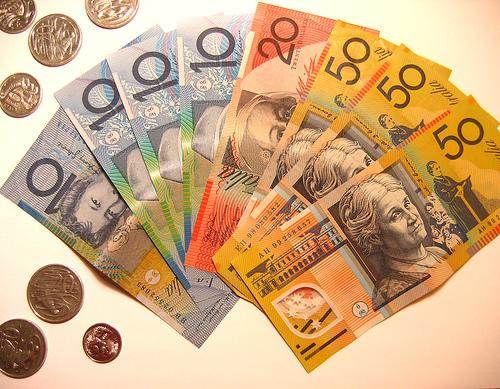By: Jarratt Davis
After seeing downside pressure for several months, the Australian dollar rallied on August 4, upon release of a less dovish than expected rate statement. The RBA view the current state of employment growth, economic activity and inflation as satisfactory enough to keep rates on hold. However, because Australia is heavily reliant on resource exports, the economy can be negatively affected by lower commodity prices, especially base metals. By having China as one of its key trade partners, the Australian economy is especially sensitive to fluctuations in demand from the behemoth economy. This is evident in the price of the Aussie dollar - and all commodity-linked currencies - as a reduction in demand from China in recent months has diminished revenues for mineral exporting nations. Iron ore has fallen about $15 per tonne since having a pullback up to $64 in early June. This coincides with an approximate 500 pip fall in Aussie during the same period. Copper - another key export for Australia - is down at $2.36 and making fresh 6-year lows. These metals correlate positively with the Aussie dollar.
Rates On Hold
The Reserve Bank of Australia currently have rates on hold as they further assess the effects of current policy. Having already cut rates 50 basis points during 2015, the Bank is able to refrain from policy change for the foreseeable future. The RBA kept rates unchanged at 2% at the June, July and August meetings. The OIS market currently prices a 13% chance for a cut at the next meeting.
More Dovish Monetary Policy Statement
The most recent monetary policy decision statement, released August 4, was seen as less dovish than previous statements. Firstly, because the Bank did not explicitly indicate further easing was planned; "Further information on economic and financial conditions to be received over the period ahead will inform the Board's ongoing assessment of the outlook and hence whether the current stance of policy will most effectively foster sustainable growth and inflation." Secondly, because they removed the sentence: "Further depreciation seems both likely and necessary, particularly given the significant declines in key commodity prices." This departure from the often heard jawboning by the RBA indicates the exchange rate is now at a level with which the Bank is comfortable. A crucial element of the statement was the Bank's view on inflation, which shows they are under no pressure to cut in the near-term; "Inflation is thus forecast to remain consistent with the target over the next one to two years, even with a lower exchange rate."
External Risks Remain
However, some negative recognitions did remain unchanged in the statement. The Bank reiterated that low commodity prices are causing terms of trade to fall and economic growth is at levels below the long-term average. Despite the internal metrics of the economy faring well, the Australian economy is still highly sensitive to fluctuations in China, and corresponding changes in commodity prices. A further decrease in demand from China and decline in key industrial metals prices will likely see the Aussie dollar remain pressured in the medium-term. However this external factor seems to the only negative influence on the Australian economy and a pick-up in commodities demand will see the Aussie dollar strengthen.
Neutral Bias
Our bias for the Australian dollar changes to neutral in the short-term, from slightly bearish. This is in light of the recent statement from the RBA. However due to waning demand from China and associated drops in industrial metals prices, we expect the bias for AUD to turn back to bearish later in the year.
Jarratt Davis is one of the only verified fund managers to share his techniques with retail traders. He was ranked as the 2nd best performing FX trader in the world by the Barclay's currency traders index, between 2008-2013. Learn his methods by getting his free course here.


